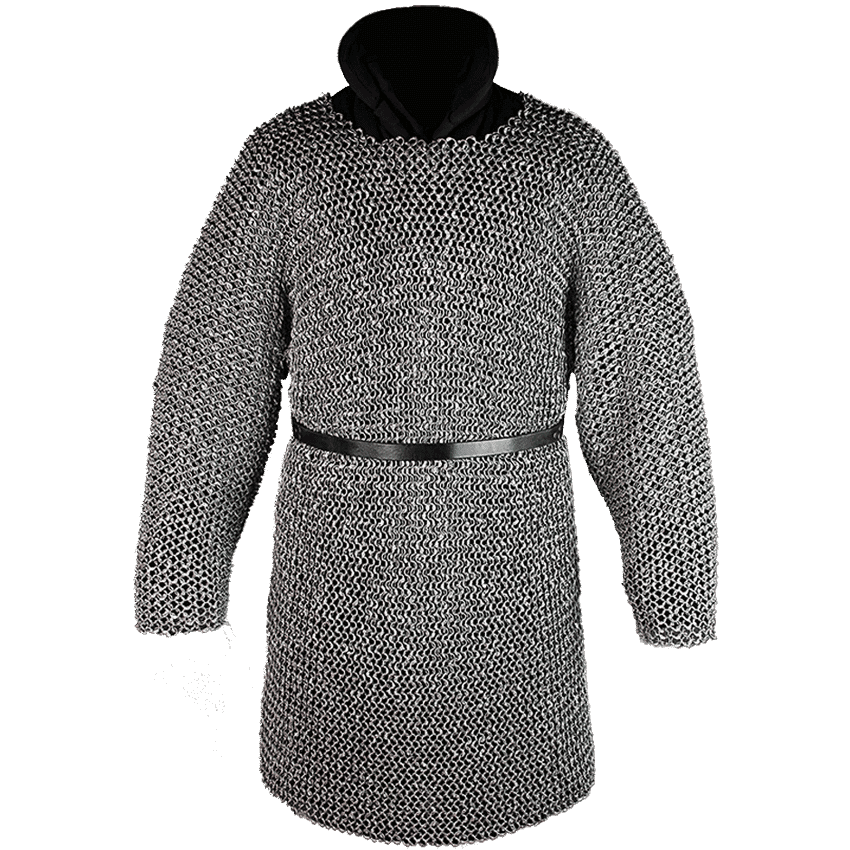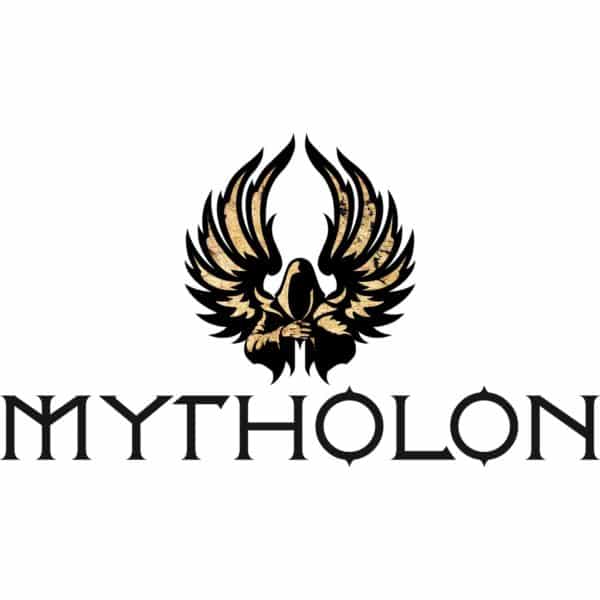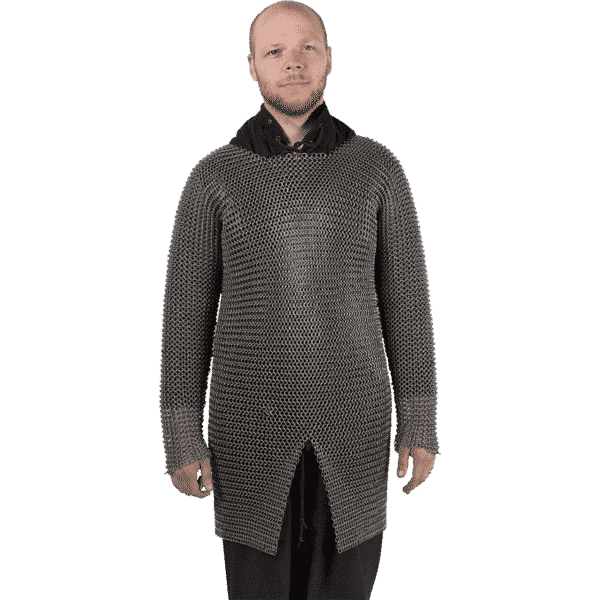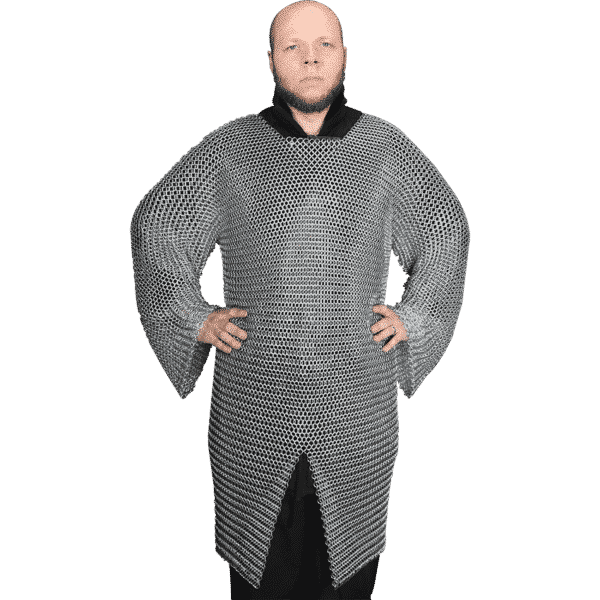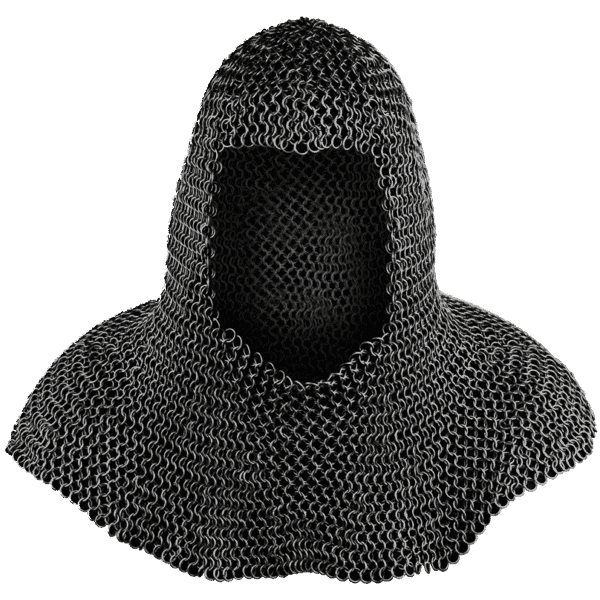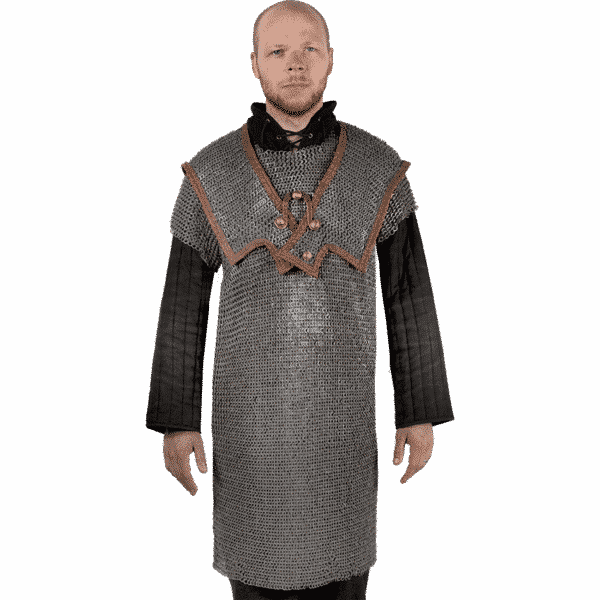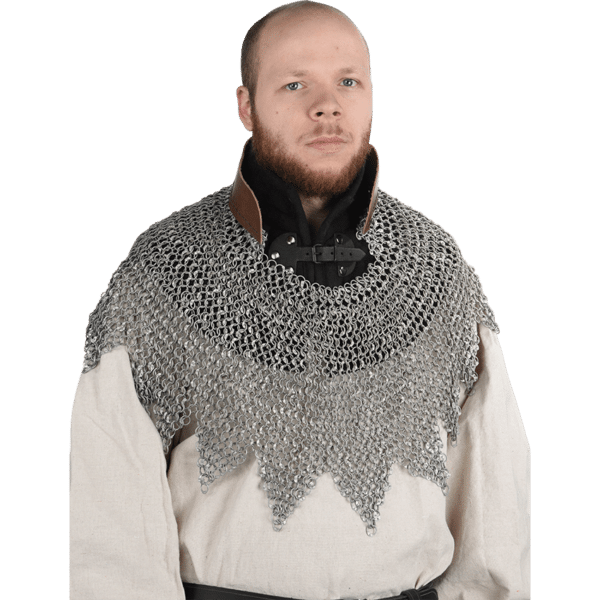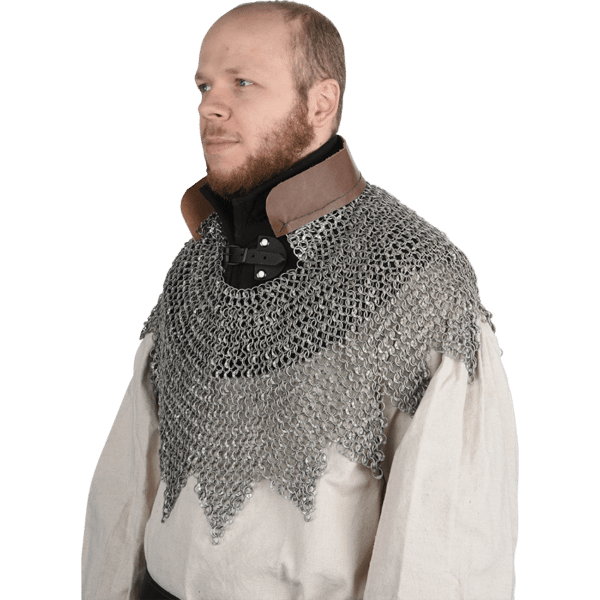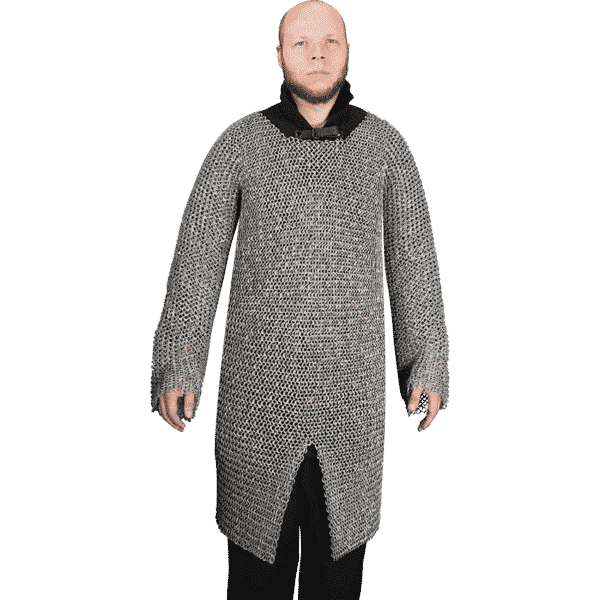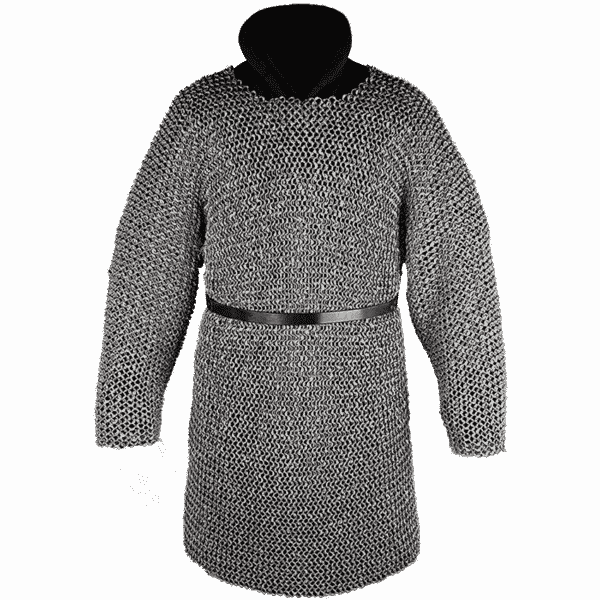(About) A Feather-Light Chainmail Shirt
Our Premium Chainmail Shirt has been painstakingly reproduced from surviving examples of medieval European chainmail, using modern materials and heritage techniques to produce a hauberk of mail that outshines anything medieval smiths could have dreamed of. This chainmail shirt is a hauberk – it is long-sleeved, and extends to the knee.
Is it a Plane? No – It’s Prestige aluminum Chainmail
In the medieval period, most suits of chainmail would have been made from either iron or mild steel. These materials were heavy and prone to corrosion, and required endless repair and maintenance. For our Premium Chainmail Shirt, the armorsmiths at Mytholon have used high-quality aluminum to produce a corrosion-free hauberk that is far lighter than a similarly constructed iron or steel chainmail shirt – think of it as Frodo’s mithril shirt’s big brother. It is finished in a flawless matte-steel effect – you won’t need to worry about looking like a tin can on the battlefield! The only drawback of aluminum is that it is not a contact-ready material like spring steel, so it is perfect for an LARP outfit, or for a non-contact re-enactment impression.
Ring-A-Ring-O-Rivets
The construction is where this hauberk really shines. The gauge of ring chosen for this suit of chainmail is 10mm; this generally slight more open than the gauges most commonly seen in the rare fragments (and rarer whole pieces) of chainmail that have survived from the height of the Viking period, but that means our Premium Chainmail Shirt is lighter and more flexible. The overlapping tips of each wire ring are individually flattened, threaded into place and then riveted together with domed rivets, just as a medieval armor-maker would have done centuries ago. Early-medieval chainmail was often produced more cheaply, alternating rows of whole flat rings stamped out from sheet metal with riveted wire rings. By the high-medieval period, smiths had switched to making mail wholly from riveted mail. This was more time-consuming, but made tighter, more effective chainmail – and Mytholon have chosen this method in order to provide the best possible historical accuracy. For the same reason, they have chosen the traditional European 4-in-1 arrangement of links.
Overall, this hauberk is simply peerless: it spares no detail in flawlessly reproducing a suit of mail from the height of medieval chainmail technology, but with modern aluminum which makes it infinitely more wearable and easier to care for. It would make an enviable addition to a Viking noble re-enactment, or you could pair it with some of our magnificent plate armor to build a prestige-grade roleplay outfit that’ll knock the socks off any convention or adventuring party. We expect that you will wear the chainmail over a gambeson, so we have included sizing that takes that into account below.
(History) The Hauberk Through the Ages
When you think of a suit of chainmail, you’re imagining a hauberk: a torso of chainmail which extends to protect the thighs and arms. The word itself gives us a clue of its evolution from the early-medieval past: it has its roots in ‘hals’, meaning the neck in many Germanic Northern European languages like Danish, Old English and Frankish, and ‘berga’ meaning to protect. Thus a ‘halsberga’ originally referred to the armor of the neck and shoulders, which gradually became applied to armored covering for the whole upper body. Chainmail became widespread across Europe with the Roman expansion into Gaul, Iberia and the edges of Northern Europe – and they brought with them a martial imperial culture that was broadly adopted by the settled non-Roman people in those areas and those bordering them. Thus, although we don’t think of them as the inheritors of Rome at all, the Vikings’ arms and armor would have been pretty recognisable to a Roman cavalryman from the 4th-century CE.
The Franks under Charlemagne were the ones to seriously build on Roman armor forms: the imperial records at Aachen show that hauberks became both a military and social cornerstone. Nobles were required to provide a certain number of chainmail hauberks to the King’s army along with their levied troops, and failure to do so would result in their titles being revoked! We have records of chainmail armor being handed down in inheritance, so clearly they were valuable objects. These nobles made up the ranks of the fearsome Carolingian heavy cavalry – astride stout horses bred with sturdy Moorish bloodlines, they were the sons of nobles, outfitted in Frankish armor called a brunia, likely a hauberk of mail, wielding spears or long spatha swords.
It is these horseman who were the predecessors to the Norman knights who pacified England and brought it under the control of William I the Conqueror. The Bayeux Tapestry shows these unparalleled horsemen in their full finery: each of them wears a full-length hauberk from wrist to knee, with a long slash up to the groin preserving mobility. The sons and grandsons of these Anglo-French and Frankish nobles were the ones who would go on the Crusades in the succeeding generations, and we see the typical Crusader Knight in a hauberk of chainmail worn under a surcoat and mantle with the blazon of their Templar or Hospitaller Order.
The hauberk, in short, was an instantly recognisable marker of martial prowess, social status and spectacular wealth. Our Premium Chainmail Shirt brings all of that prestige and power to your LARP outfit or re-enactment.
Technical Specifications:
- Material: Aluminum
- Finish: Matte steel
- Ring Type: Round, riveted throughout
- Ring Diameter: 10mm
- Configuration: 4-in-1
- Weight: 25 lbs
- Sizing:
One size
Chest: 35.4-49.2 Inches
Length: 33.5 Inches
Sleeve Length: 26 Inches

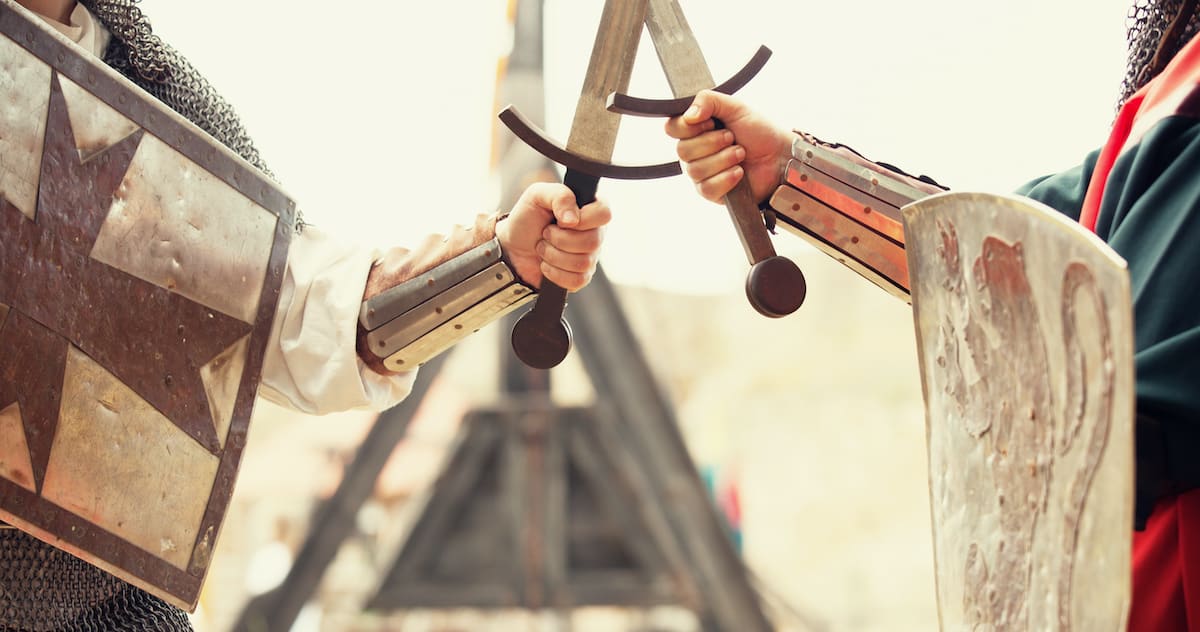 Historical Swords
Historical Swords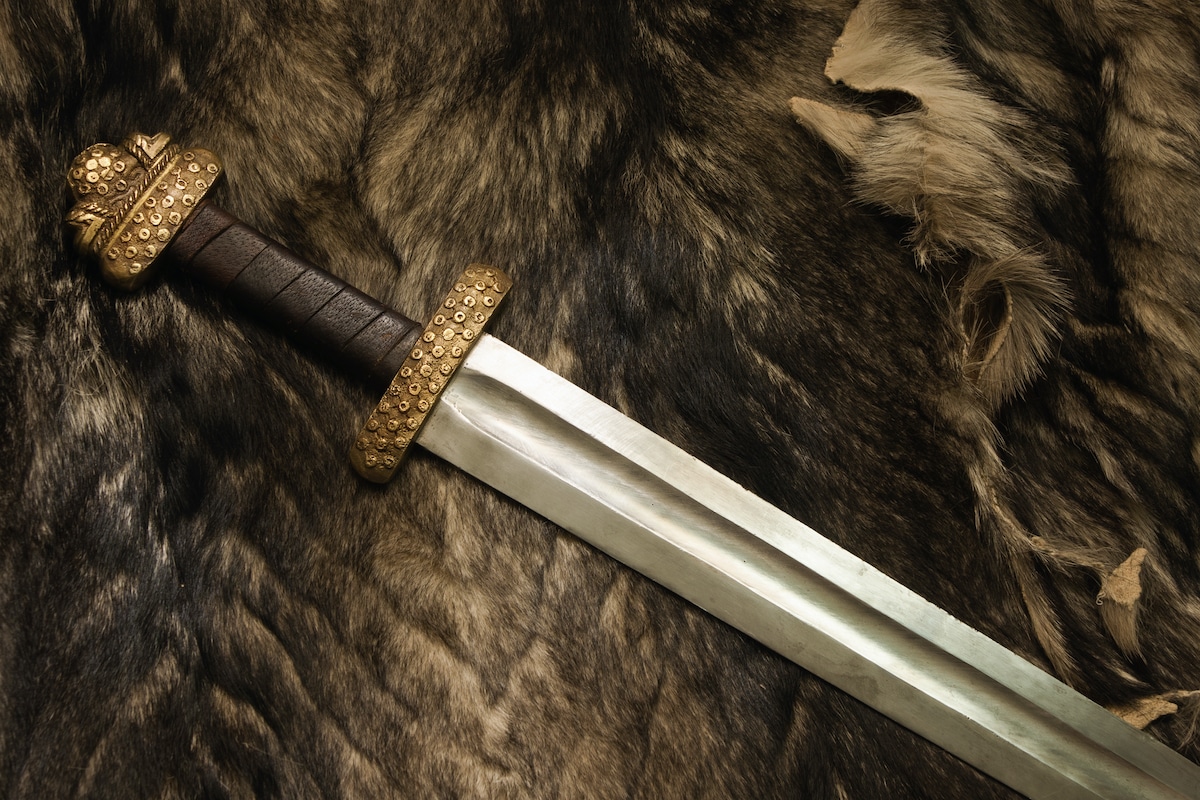 Norse & Viking Swords
Norse & Viking Swords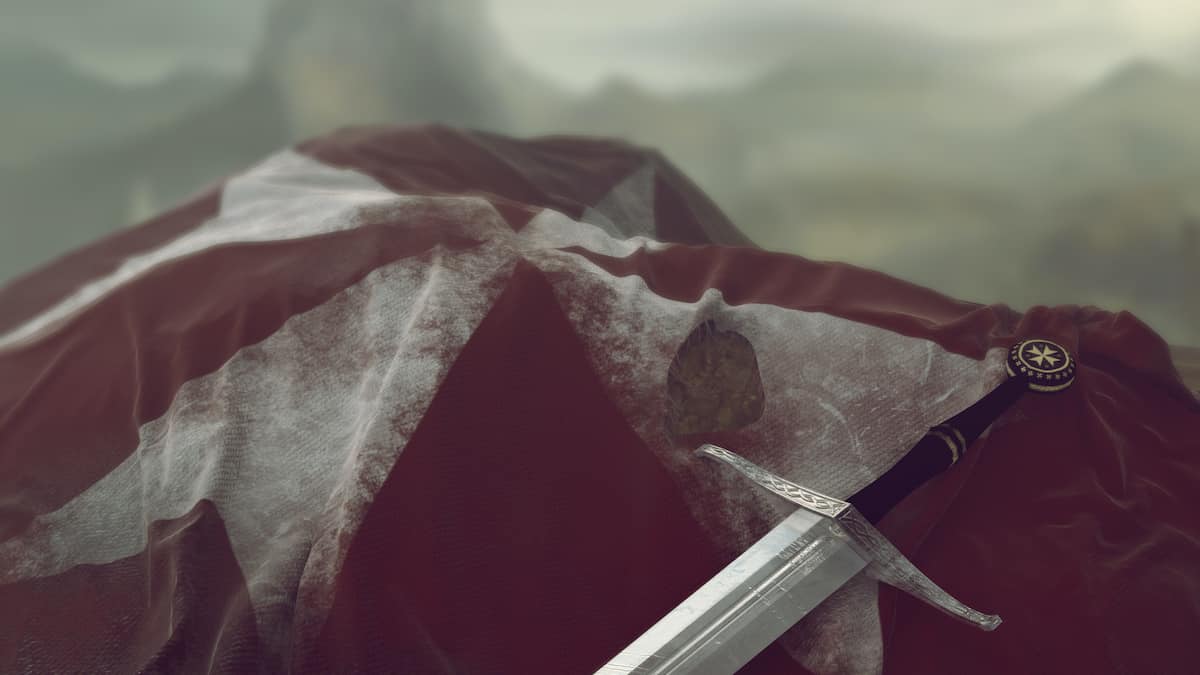 Templar Swords
Templar Swords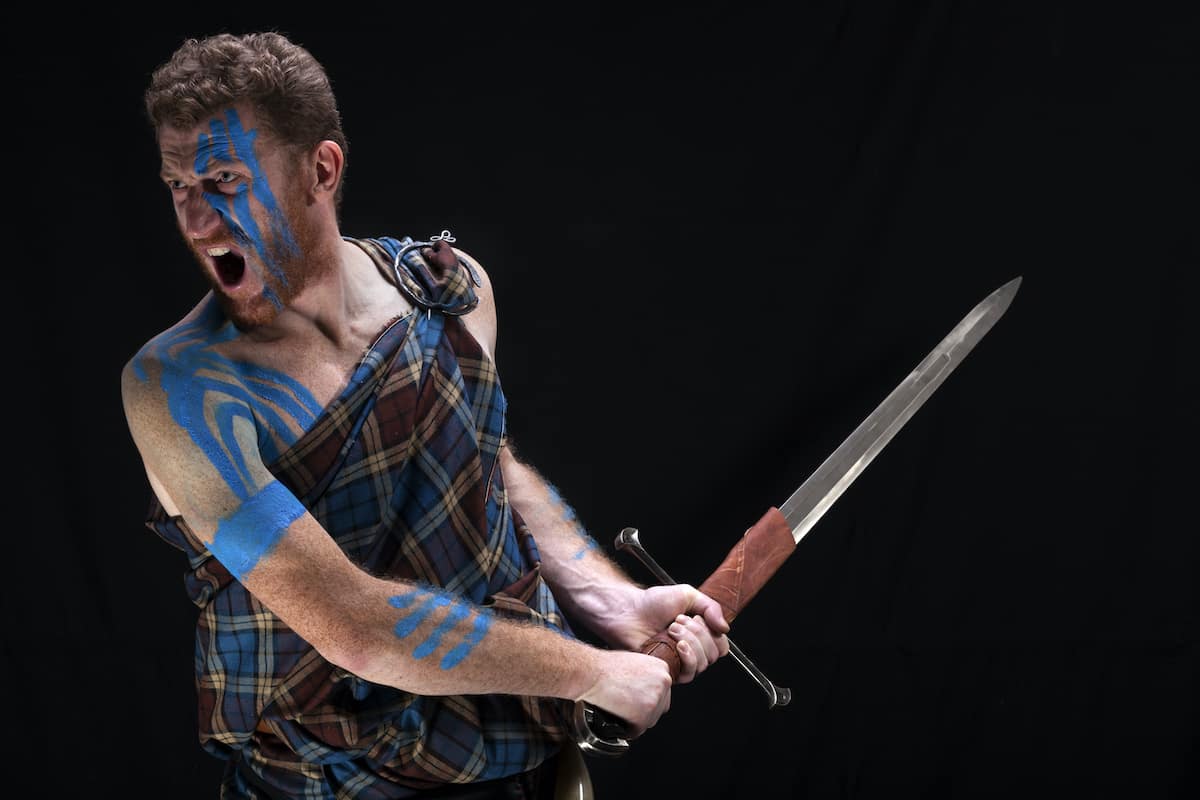 Claymore Swords
Claymore Swords Fantasy Swords
Fantasy Swords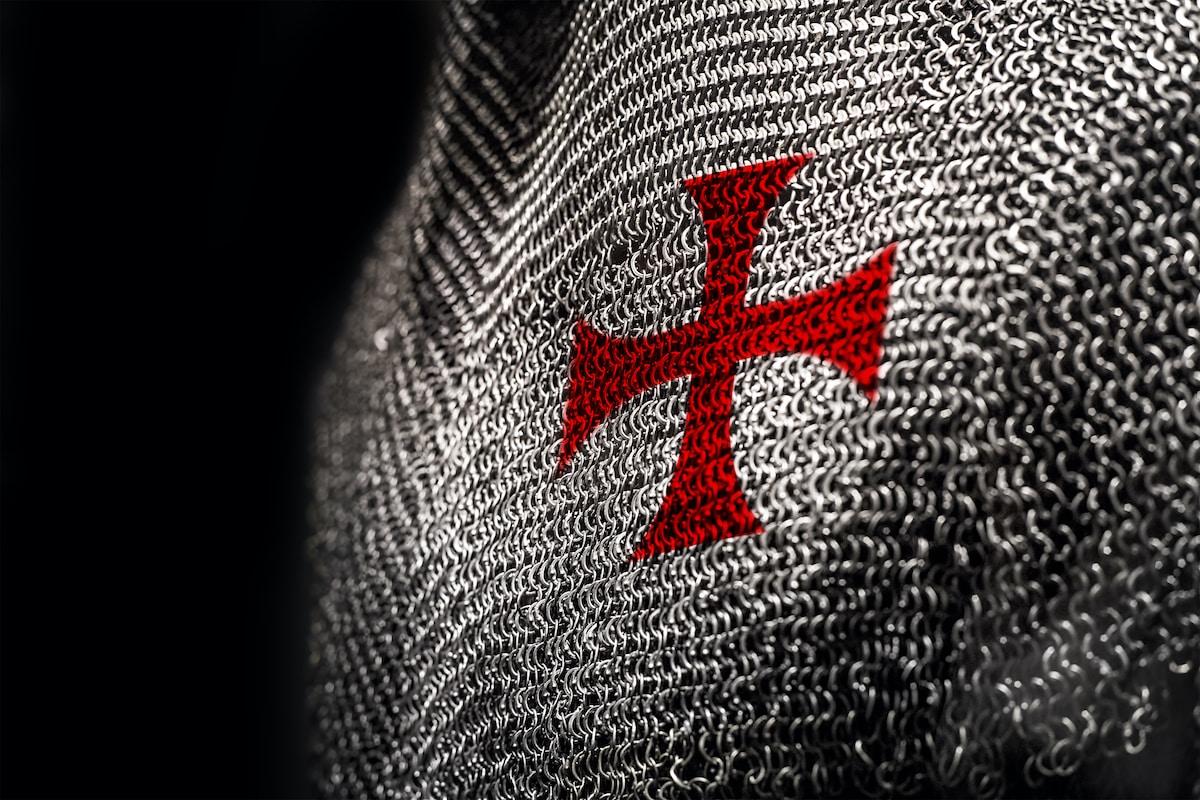 Chainmail
Chainmail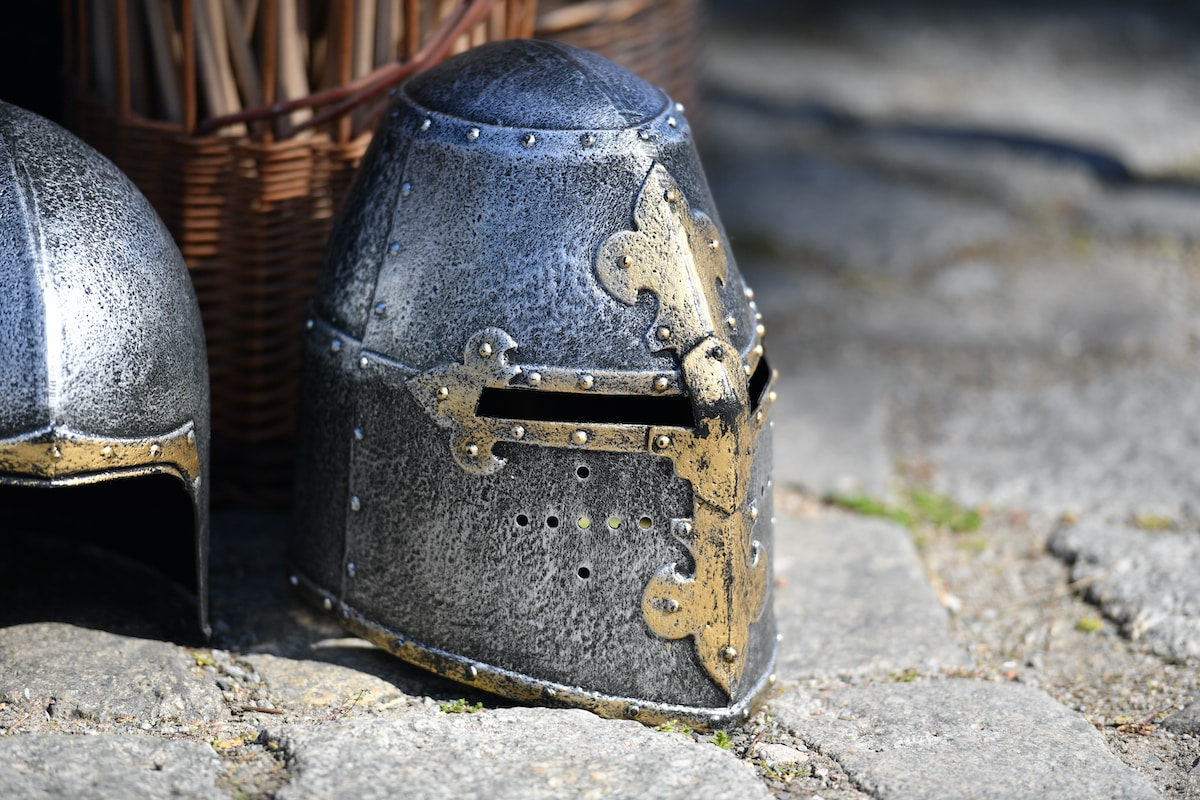 Helmets
Helmets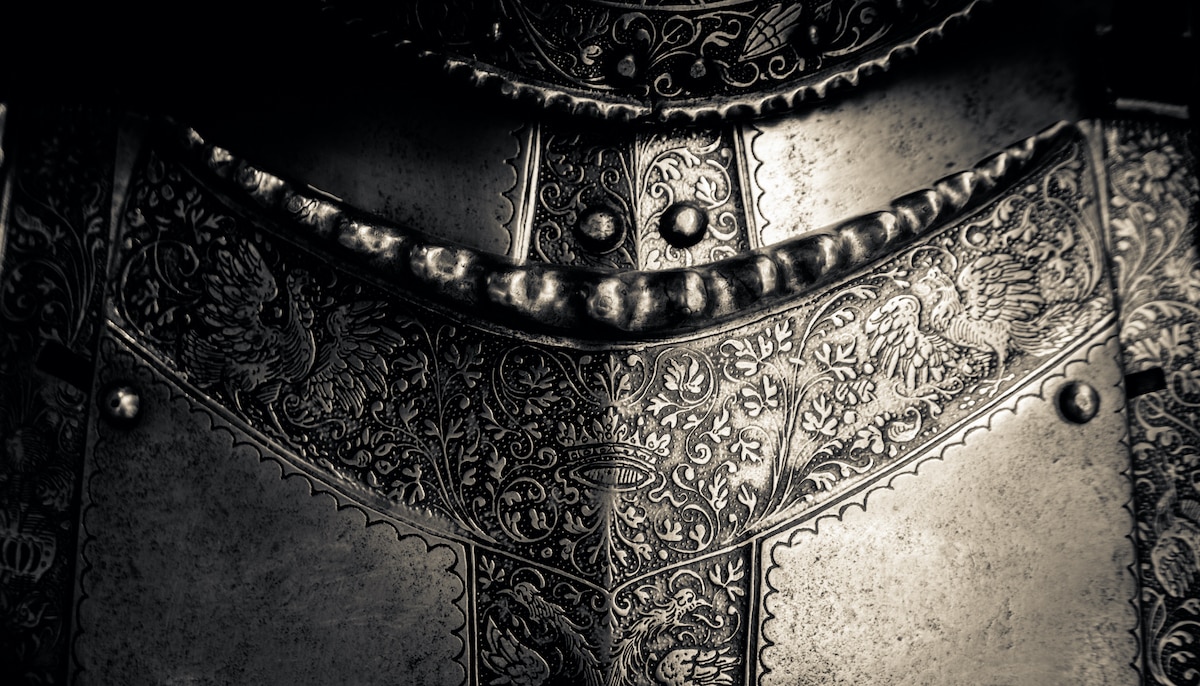 Torso Armor
Torso Armor Bracers and Arm Protection
Bracers and Arm Protection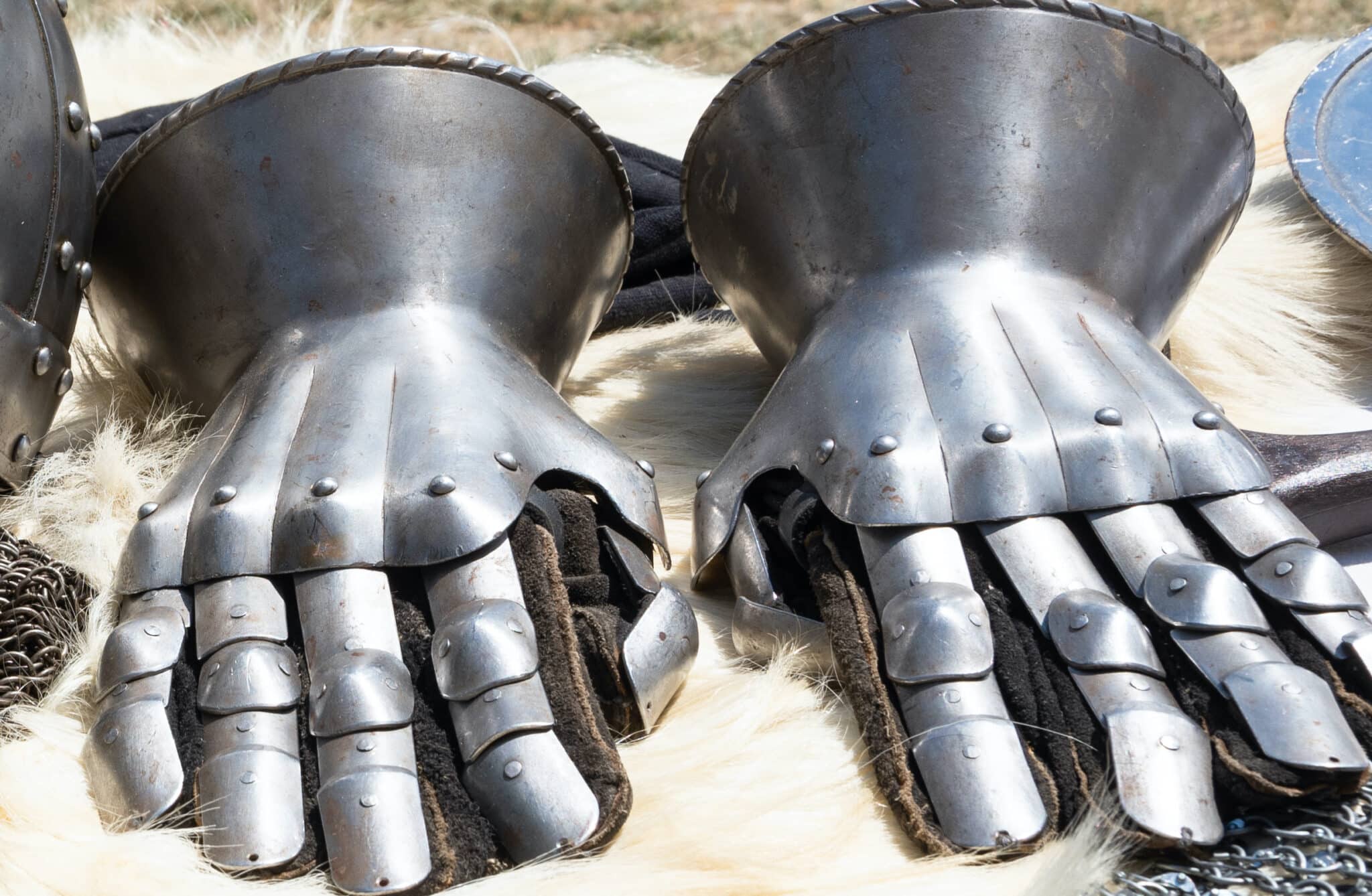 Gauntlets
Gauntlets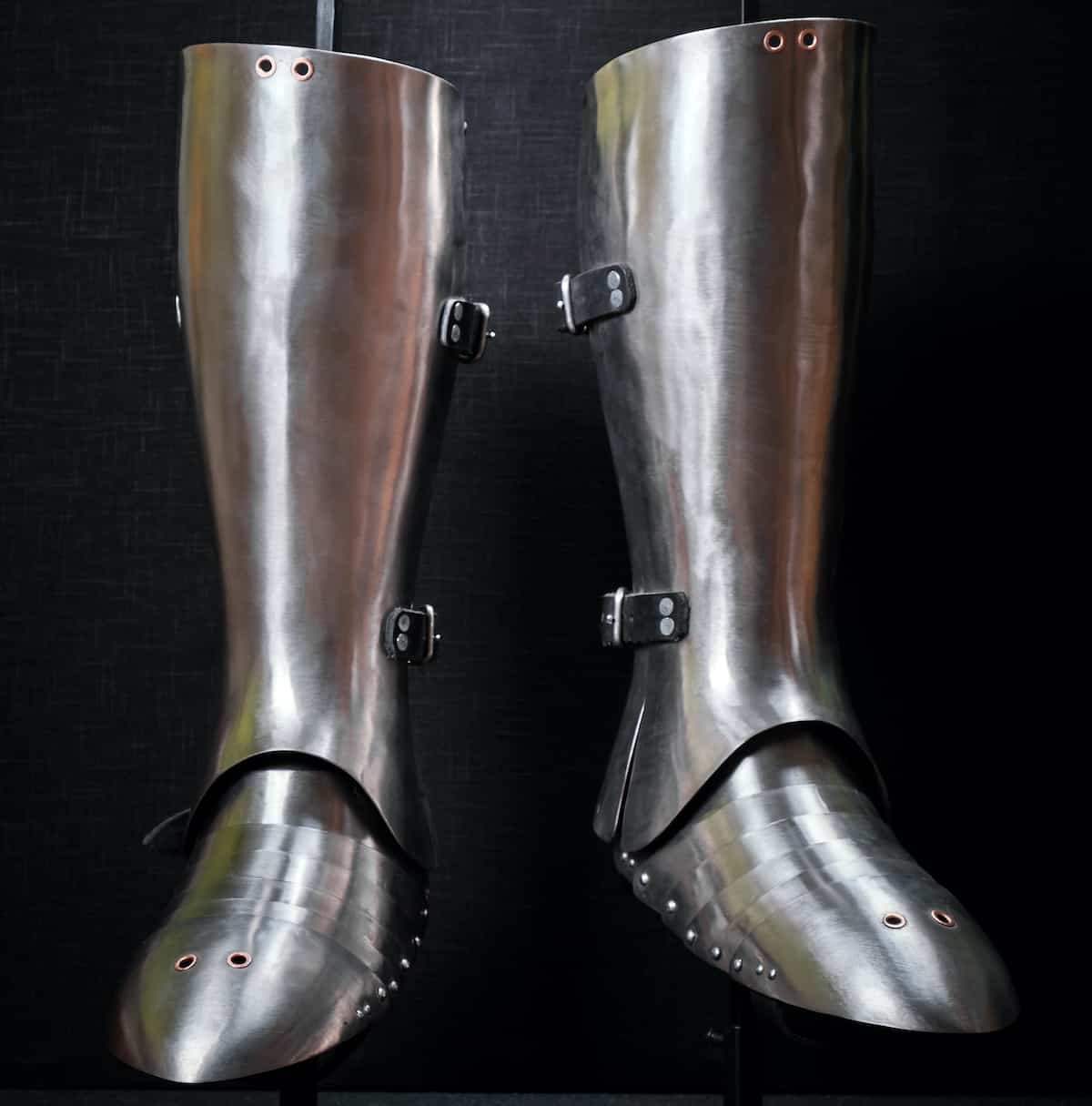 Leg Armor
Leg Armor Cloaks
Cloaks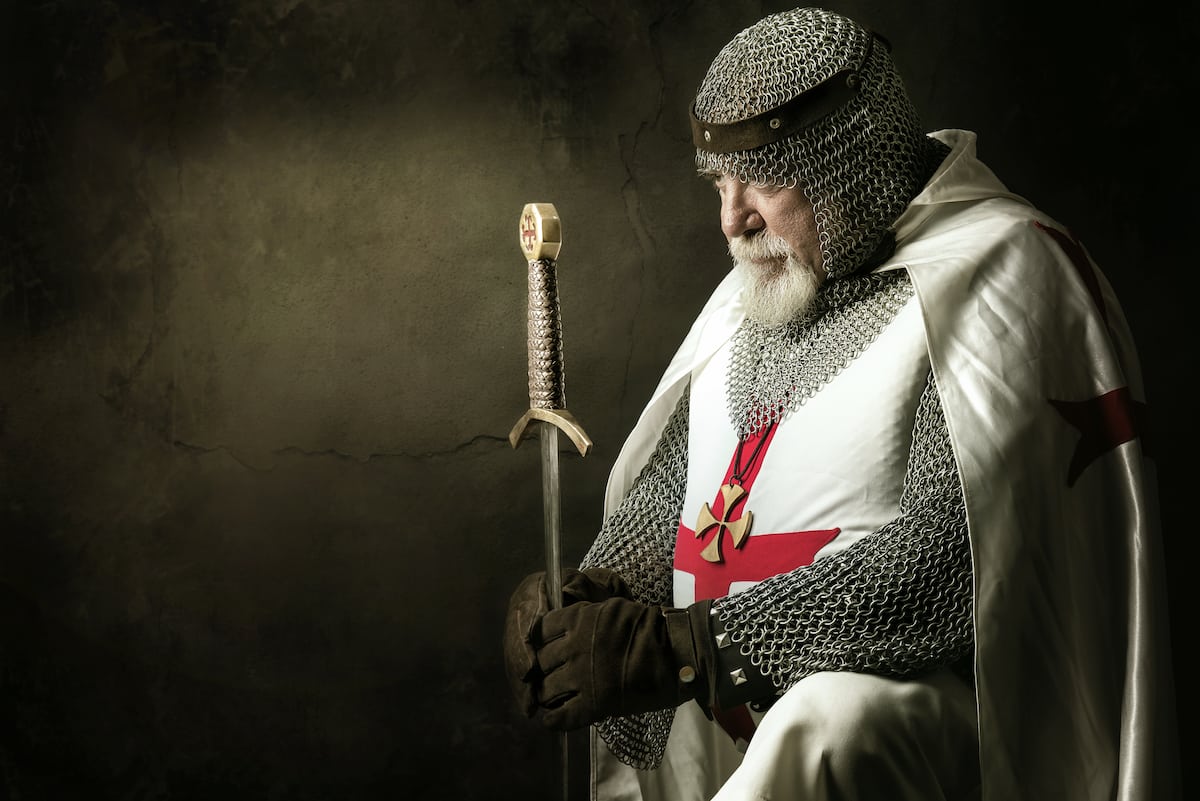 Tabards
Tabards Shirts
Shirts Tunics
Tunics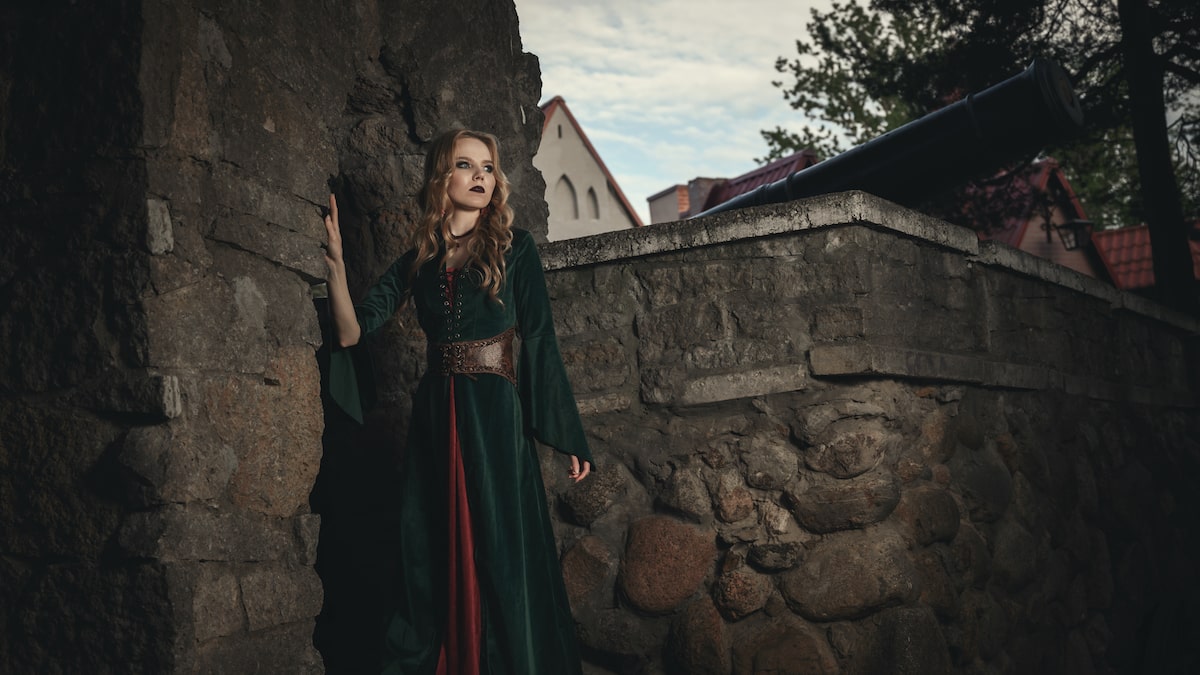 Dresses
Dresses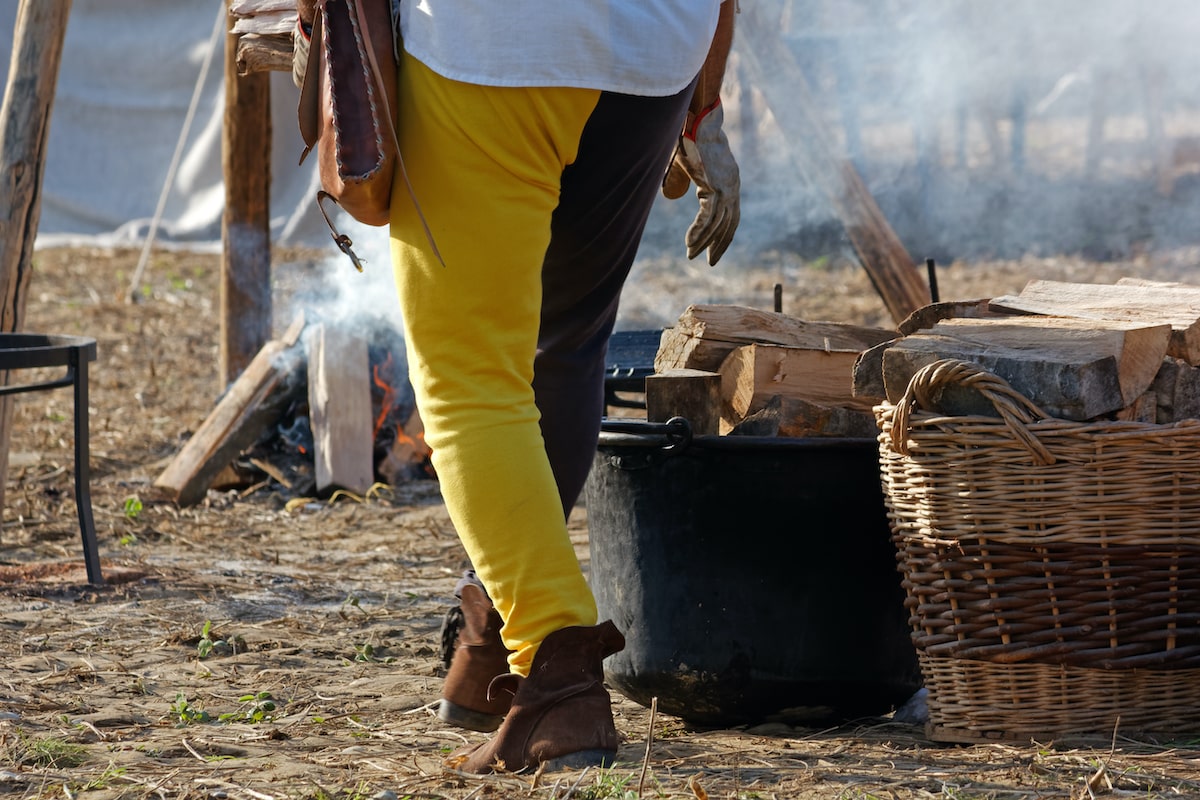 Pants
Pants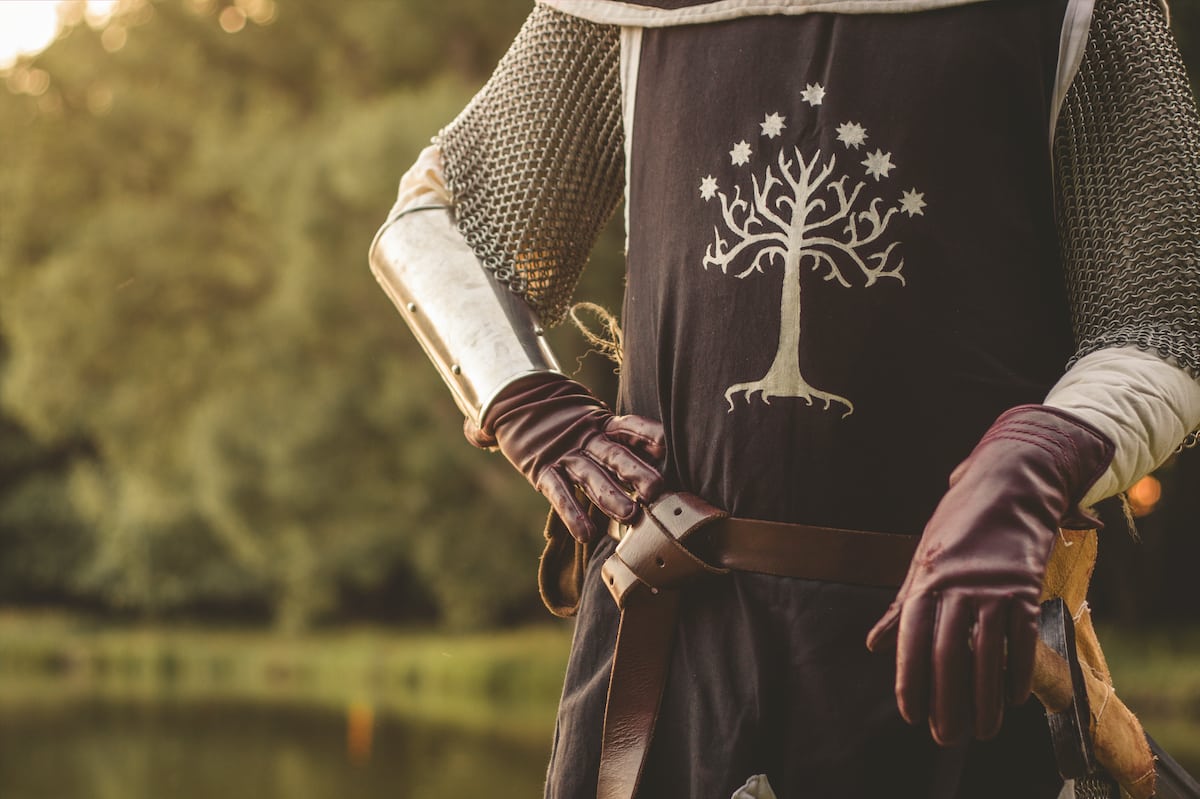 Gloves
Gloves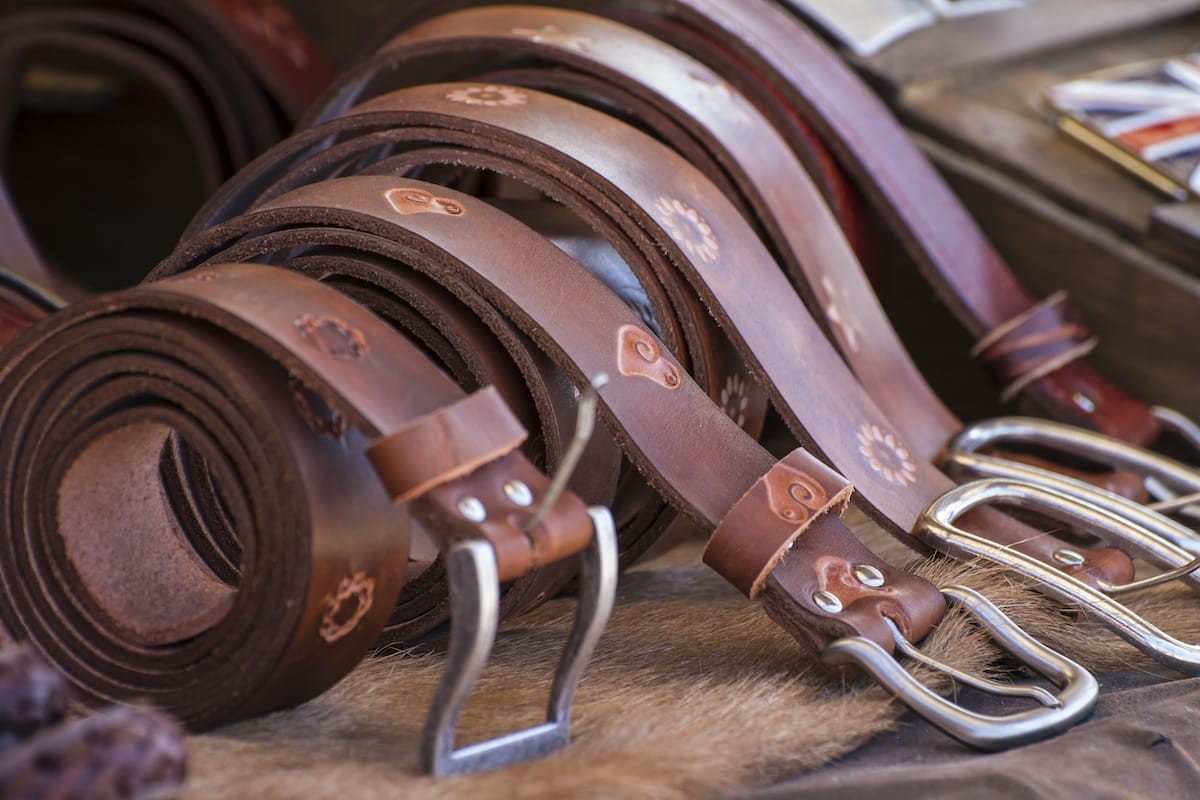 Belts
Belts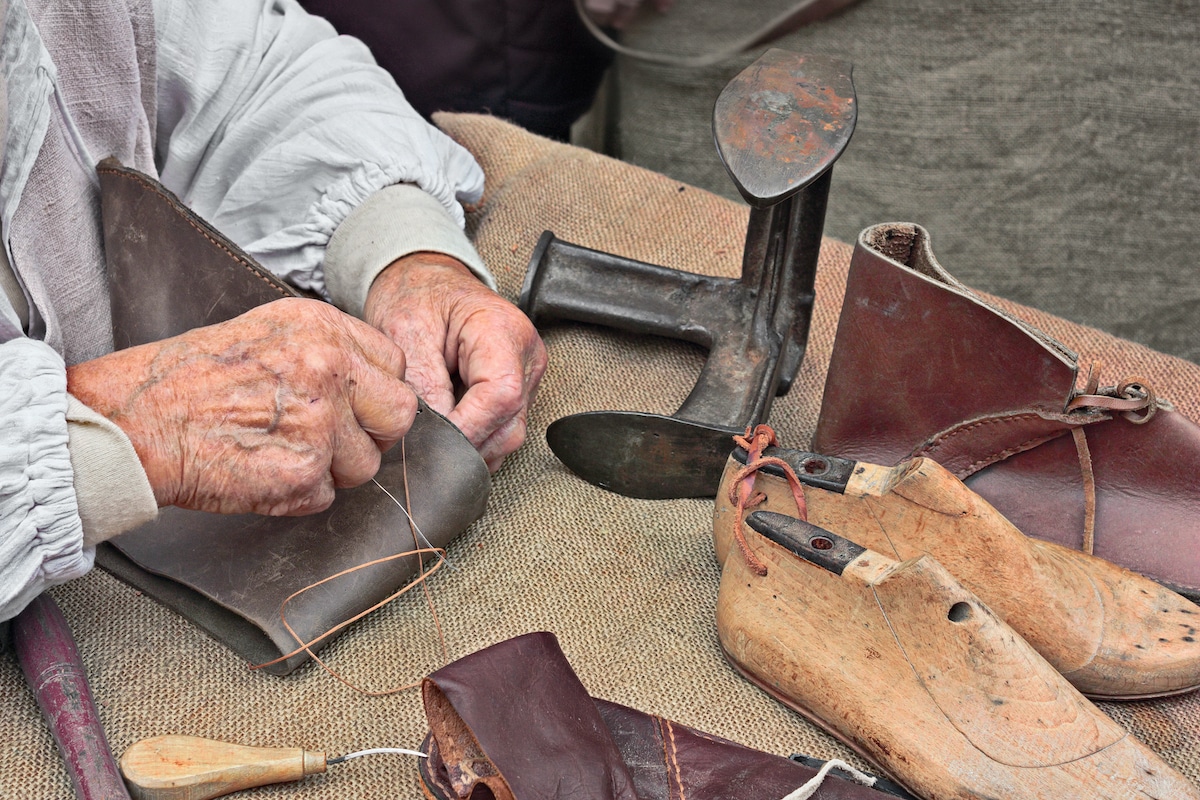 Shoes
Shoes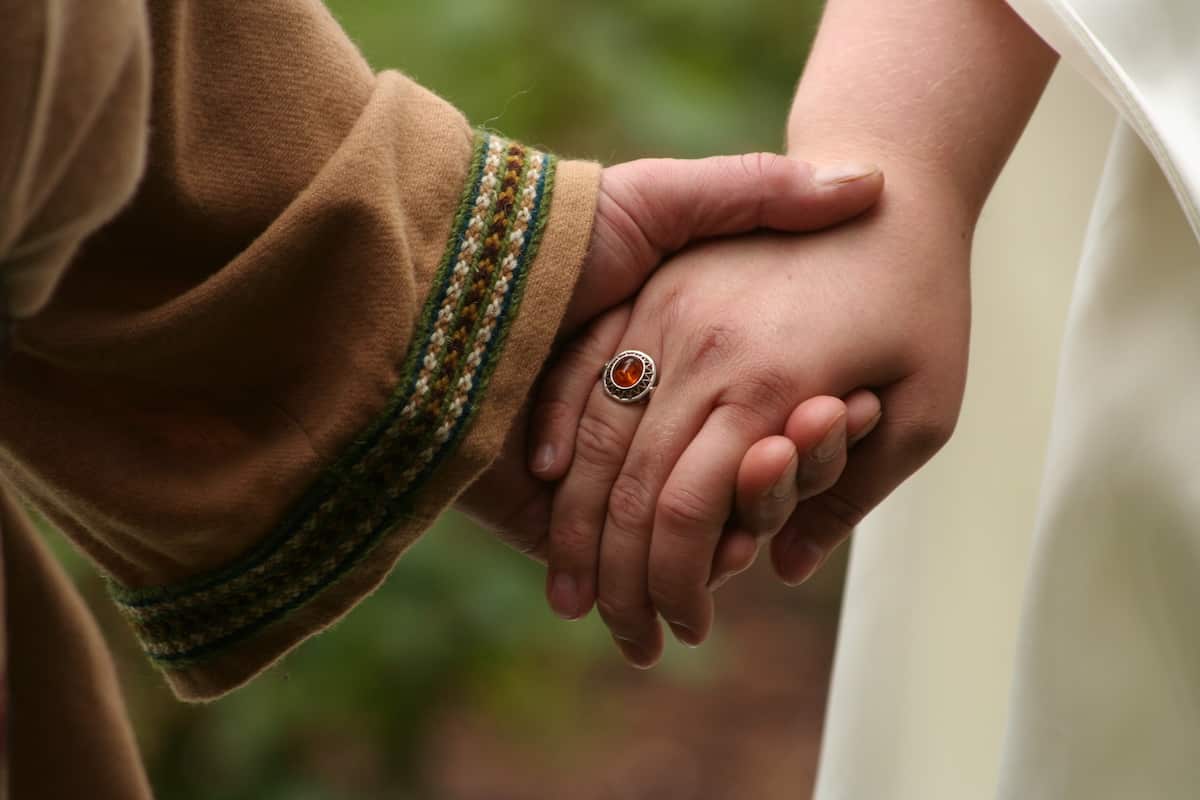 Rings
Rings Necklaces & Pendants
Necklaces & Pendants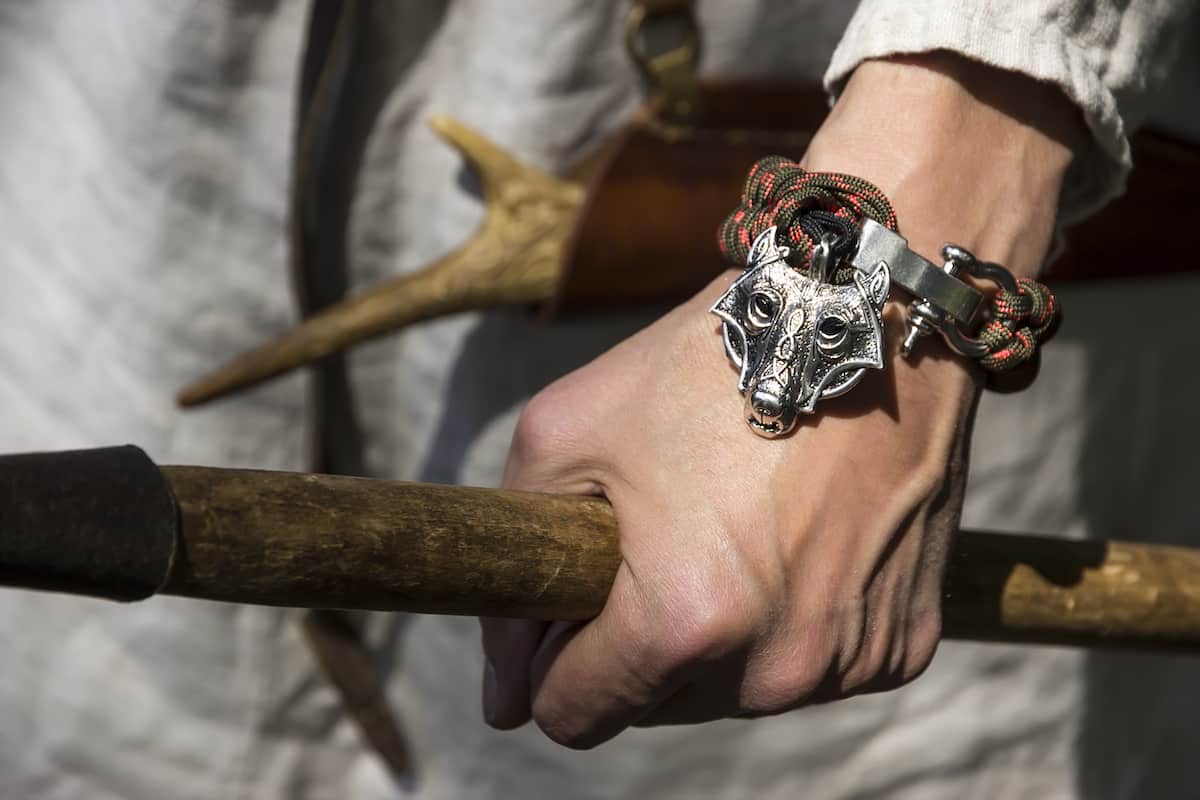 Bracelets
Bracelets